New journal article soon to appear
Bekele, M., & Champion, E. (2019). A Comparison of Immersive Realities and Interaction Methods: Cultural Learning in Virtual Heritage. Frontiers in Robotics and AI | Virtual Environments: Emergent Technologies for Cultural Heritage and Tourism Innovation. doi:10.3389/frobt.2019.00091
Upcoming publications
Pending, To Be Presented or Published
Books
- Champion, E. (2020: written, under review). Rethinking Virtual Places. Indiana University Press, Spatial Humanities series.
- Lee, C. & Champion, E. (Ed). (2020: pending). Screen Tourism and Affective Landscapes.
Book Chapters
- Champion, E. (2019: in press). “From Historical Models to Virtual Heritage Simulations”. Open access book chapter for The Virtue of the Model 2.0 → From the Digital 3D Dataset to the Scientific Information Model V.2, Heidelberg University Press, Germany, March 2019. URL: http://books.ub.uni-heidelberg.de/arthistoricum/series/info/caa?lang=en
- Champion, E. (2020). Games People Dig: Are They Archaeological Experiences, Systems, or Arguments? In S. Hageneuer (Ed.), Communicating the Past in the Digital Age: Proceedings of the International Conference on Digital Methods in Teaching and Learning in Archaeology, (12th-13th October 2018). London, UK: Ubiquity Press. URL: https://communicatingthepast.hcommons.org/2018/04/19/release-of-the-call-for-paper/
- Champion, E. & Foka, A. (2020: in press). “Chapter 19 Art History, Heritage Games, and Virtual Reality”, in Brown, K. J. (Ed.). The Routledge Companion to Digital Humanities and Art History. Routledge, UK.
- Champion, Erik, and Terhi Nurmikko-Fuller. 2020 (pending, invited). “Blue Sky Skyrim VR: Immersive Techniques to Engage with Medieval History.” In Games for Teaching, Impact, and Research edited by Robert Houghton.
Journal Articles
- Champion, E. (2020). Culturally Significant Presence: How Computer Games Can Facilitate Cultural Heritage. International Journal of Heritage Studies. Extended abstract accepted. Full Article in review.
- A journal article with Mafkereseb Bekele on augmented reality has been accepted, I think, for Frontiers.
Invitations, keynotes, workshops and applications
- Invited and funded to present at Learning by Game Creation Summer School, Turin, Italy, 1-8 September 2019.
- Two group session proposals to International Computer Applications and Quantitative Methods in Archaeology conference (CAA 2020), Oxford, UK, 14-17 April 2020. One session proposal was by invitation.
- Invited, accepted and funded to present a keynote and workshop at DHDownunder 2019, Newcastle Australia, 9-12 November,
- Invited to keynote in Hainan for Cultural Heritage and Tourism conference, 23-24 November 2019.
Travel
I am traveling to Italy first week of September teaching a workshop on serious games and game prototypes for history and heritage, and providing a lecture on virtual heritage scholarship.
In December I am giving a keynote and a similar workshop in Sydney on serious games for digital humanities.
In-between I have been invited to China to give a talk on cultural heritage and tourism (not confirmed, I have to get back to them) and I also have a small grant to visit Wellington New Zealand to discuss a grant with potential partners (possibly October or November).
Then no traveling planned at all, but a long holiday!
There is a book on virtual places I was hoping to have published next year but it is taking a long time to be reviewed (reviewed for the second time). Perhaps I should put pending publications in a following post.
Microsoft Academic’s top VH conferences
According to Microsoft Academic these are the top Virtual Heritage conferences..(journals are here).
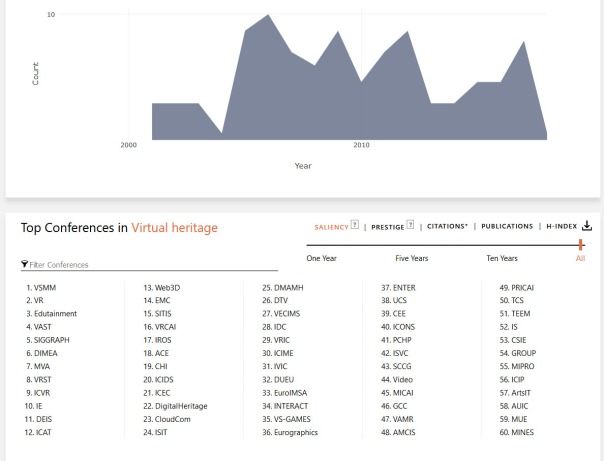
social media
Apart from twitter I have steered away from academic and social media but have decided to experimentally join or rejoin linked in and research gate.
I just hope I don’t spend too much time answering replies about sending old papers to researchers-if they are not on academia edu then the papers are almost certainly commercial and have to be bought-sorry!
NB UNESCO Chair related material is on the Curtin Institute for Computation Research Groups site.
Philosophical issues caught in VR
I am thinking there are quite a few philosophical issues in VR and on writing just a few down methinks there is a potential book here for undergrads but the chapters will have to be reduced in number, to probably 6? 8? I wonder how big a chapter can be to be set for a class, 6000 words?
- Embodiment in Virtual Classrooms (Hubert Dreyfus on Second Life)
- Social media and Accountability in VR and Virtual Worlds
- Defining reality in Virtual Reality (various)
- Agreeing to Disagree on Presence, virtual presence, immersion
- Authenticity of the RECREATED Real and the BORN DIGITAL
- Social, technological, and cultural CONVERGENCE With VR (Jenkins)
- From Hegel to Jenkins: ISSUES OF CONTROL, RHETORIC, Narrative AND PEDAGOGY (Hegel, Jenkins)
- MIND-BODY-HARD-DRIVE: What VR does for the Mind-Body Problem
- Big Data and the Kantian SUBLIME
- Data, Metal, Plastic, and Obsolescence
- Privacy and the Augmented State
- Can We Place a Virtual Place? (Jeffrey Malpas)
- Culture, Where Art Thou? (Can ‘Culture’ really exist in VEs on the cloud?)
- Is Vision the Most Sense-ible in VR or too Dominant?
- Paradise, Purgatory and the Nietzschean Recurrence of the Eternal Loop: how to visualize them?
- ‘Technology is Dead.’ Signed, God: Is technology too teleological?
Other issues that interest me, what is a world? Do we need virtual rules for them? TO what extent is risk required? To what extent must the visitors/participants have agency and autonomy?

New UNESCO chair website
UNESCO Chair of Cultural Heritage and Visualisation news and projects will be listed at https://computation.curtin.edu.au/research/groups/unesco-chair-cultural-heritage-visualisation/ for the immediate future, and we hope to connect our prototype GIS+3D model website to that as well (when they work out access for me, hopefully soon).
Image by Professor Lisa French (RMIT). Dinner at ANU Canberra before meeting of Australian UNESCO Chairs: Erik Champion (Curtin), David Gibson (Curtin), Gary Bouma (Monash), Kerrie Wilson (QUT), Ana Filipa Vrdoljak (UTS), Lisa French, (RMIT), Imogen Bartlett (OPTUS), Gregory Andrews (Assistant Secretary, International Organizations Branch (DFAT)), Quentin Grafton (ANU), Ms. Sue Moore, (Secretary General of the Australian Commission for UNESCO).
major grant: Photogrammetry heritage and interaction design
Announced today-Australian Research Council (ARC) Linkage 2018 Grant LP180100284 awarded $461,783.00
Investigators:
Dr Andrew Woods; Professor Erik Champion; Dr Petra Helmholz; Dr David Belton; Professor Derek Lichti; Ms Catherine Belcher; Dr Ross Anderson; Mr Ian Thilthorpe; Mr Danny Murphy; Adjunct Professor Alec Coles; Dr James Hunter; Mr Michael Harvey.Photogrammetric Reconstruction for Underwater Virtual Heritage Experiences. This project aims to enable significant underwater cultural heritage sites such as shipwrecks to be recreated in immersive underwater virtual heritage experiences. Photogrammetric 3D reconstruction techniques will be used to generate complex digital 3D models of shipwreck sites from hundreds of thousands of underwater images. This will allow vivid experiences to be created which explain the stories of these wrecks. The project will conduct audience engagement studies to recommend the most appropriate methods to implement underwater virtual heritage experiences for Australian audiences. The sites which will be used as test datasets are some of the most significant Australian shipwreck sites, including HMAS Sydney (II) and HMAS AE1.
Institutes:Curtin University, WESTERN AUSTRALIAN MUSEUM, AUSTRALIAN NATIONAL MARITIME MUSEUM, and University of Calgary.
To 3D or Not 3D: Choosing a Photogrammetry Workflow for Cultural Heritage Groups
To 3D or Not 3D: Choosing a Photogrammetry Workflow for Cultural Heritage Groups, Heritage journal article by Dr Hafizur Rahaman and myself is out:
Rahaman, H., & Champion, E. (2019). To 3D or Not 3D: Choosing a Photogrammetry Workflow for Cultural Heritage Groups. Heritage, 2(3), 1835-1851. Retrieved from https://www.mdpi.com/2571-9408/2/3/112
The 3D reconstruction of real-world heritage objects using either a laser scanner or 3D modelling software is typically expensive and requires a high level of expertise. Image-based 3D modelling software, on the other hand, offers a cheaper alternative, which can handle this task with relative ease. There also exists free and open source (FOSS) software, with the potential to deliver quality data for heritage documentation purposes. However, contemporary academic discourse seldom presents survey-based feature lists or a critical inspection of potential production pipelines, nor typically provides direction and guidance for non-experts who are interested in learning, developing and sharing 3D content on a restricted budget. To address the above issues, a set of FOSS were studied based on their offered features, workflow, 3D processing time and accuracy. Two datasets have been used to compare and evaluate the FOSS applications based on the point clouds they produced. The average deviation to ground truth data produced by a commercial software application (Metashape, formerly called PhotoScan) was used and measured with CloudCompare software. 3D reconstructions generated from FOSS produce promising results, with significant accuracy, and are easy to use. We believe this investigation will help non-expert users to understand the photogrammetry and select the most suitable software for producing image-based 3D models at low cost for visualisation and presentation purposes.

UNESCO CHAIR Projects (September 2016-June 2019)
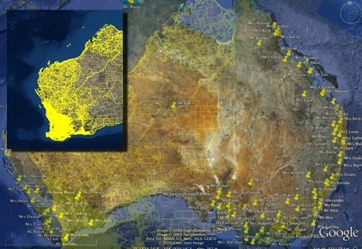
2019 Time-layered cultural map of Australia (Erik Champion and research assistant): 2018 ARC LIEF LE190100019 grant (hosted by Newcastle), $420,000 awarded GIS Programming and VR/MR mapping. URL: https://www.arc.gov.au/news-publications/media/research-highlights/australian-cultural-and-historical-data-be-linked-new-research-infrastructure
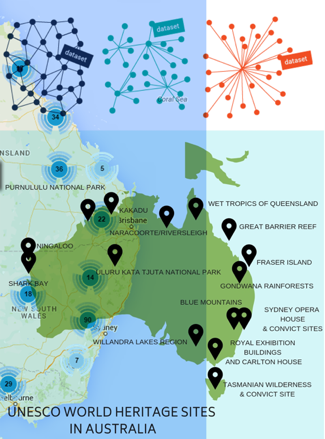
2019 GIS AR and mapping (Curtin Institute for Computation grant) (Erik Champion, David McMeekin, Hafizur Rahaman). Linked Open Data for 3D Heritage ARC grants Moviemap Geolocated Datasets and XR-Makerspace, Workflow and Web Portfolio Platform Development), $30,263.88.

2018 PhD project (Ikrom Nishanbaev): 3D/GIS Semantic Web-3D repository and Website-interface for cultural heritage objects and associated paradata.
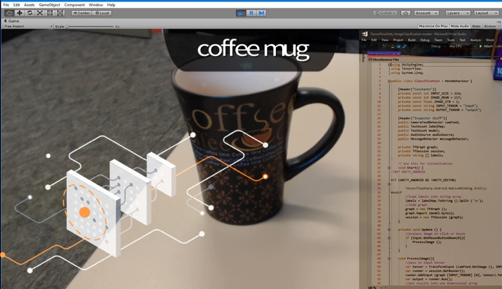
2019 MCASI grant (Hafizur Rahaman, Michelle Johnston): AR-triggered language guide (mobile device to recognise 3D objects, play associated sounds and display associated text helping a user to understand a language) $2000.
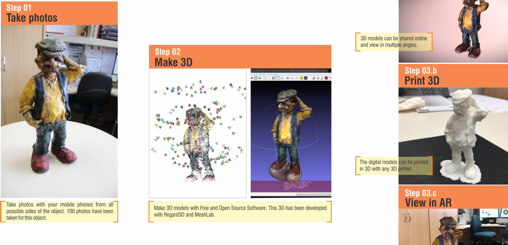
2018 Erik Champion With Research Fellow (Dr Hafizur Rahaman). Open source photogrammetry to 3D digital models to augmented and mixed reality.
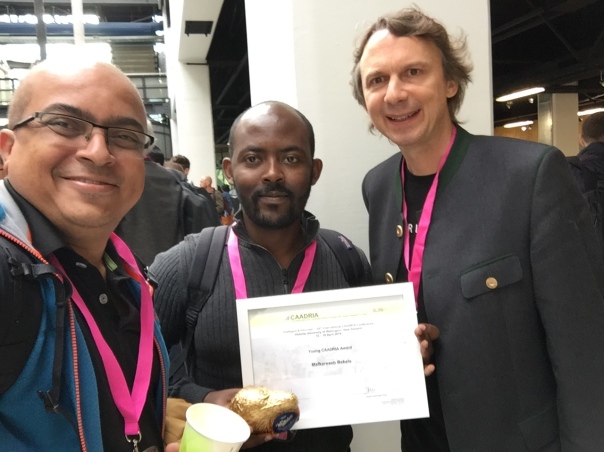
Mafkereseb Bekele (centre) winning a Young CAADRIA 2019 award (Hafizur Rahaman L and Marc Schnabel R).

2017 PhD project (Mafkereseb Bekele): Collaborative Learning with Microsoft HoloLens (sites: WA Museum-Xantho steam engine and Duyfken)-, can augment scale and create interactive map-based historical journeys as well. Featured in papers at CAADRIA (best student paper: Mafkereseb Bekele) and Computer Applications in Archaeology (Erik Champion).
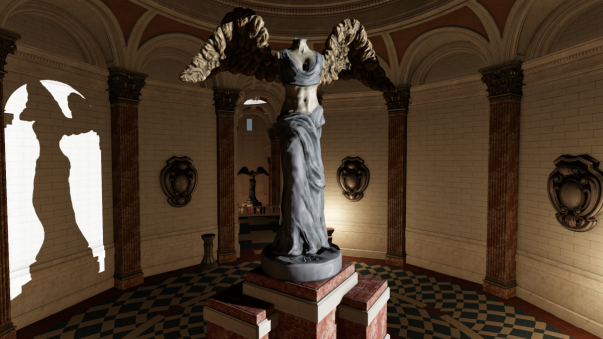

2018 Summer intern (Corbin Yap). Latest Unreal game engine ported to 4 stereo and non-stereo displays of Curtin HIVE VR centre.

2017 Software Engineering project (with co-mentor Dr Karen Miller) gesture-based interface to Minecraft and other game engines.

UNESCO chair website
We will start listing our UNESCO chair projects at
https://computation.curtin.edu.au/research/groups/unesco-chair-cultural-heritage-visualisation/
and link to a 3D and GIS platform of heritage models/sites and projects, hopefully.
Things I am working on..
I may be traveling to Italy start of September, NZ or Australia mid November, and possibly South America (it is complicated).
Just submitted a tricky paper on a difficult topic to a farway place I have always wanted to go to, but logistically shouldn’t. Cancelled a paper to a conference in a country I used to work and love, trying to cut down travel and grant reviewing for other people (two this week to do, sigh). Also have 3 or 4 draft grant applications to get back to which is a bit insane as I am already waiting on the final verdict of 4 others!
But I may apply for a Future Fellowship this year. Wish me well. Thinking of a theoretical and applied evaluation study of cultural presence in interactive heritage/digital archaeology projects. I have a lot of questions here since I first wrote about it in 2001, and just trying to decide if it can be scoped in such a way that reviewers from other, sometimes-related fields, agree with me. Anyway. The below are being reviewed or in press. And I just realized there are 5 book chapters in the list. I told myself not to write any more book chapters, in fact to slow down on the writing. Well there is also a journal article or two about to be published but those can wait for a later mention. Hmm, it is really time to cut back on the writing. I apologize to anyone who tries to wade through my books and papers trying to find a specific something…
- BOOK Champion, E. (2020). Rethinking Virtual Places. Indiana University Press, Spatial Humanities series. Final blind peer review, due back July, I hope.
- BOOK Lee, C. & Champion, E. (Ed). (2020: pending). Screen Tourism and Affective Landscapes. May be changing publishers.
- CHAPTER Champion, E. (2019: in press). “From Historical Models to Virtual Heritage Simulations”. Open access book chapter for The Virtue of the Model 2.0 → From the Digital 3D Dataset to the Scientific Information Model V.2, Heidelberg University Press, Germany, March 2019. URL: http://books.ub.uni-heidelberg.de/arthistoricum/series/info/caa?lang=en Should have been printed by now! Open access.
- CHAPTER Champion, E. & Foka, A. (2020: in press). “Chapter 19 Art History, Heritage Games, and Virtual Reality”, in Brown, K. J. (Ed.). The Routledge Companion to Digital Humanities and Art History. Routledge, UK. With editor. Still to be reviewed I assume.
- CHAPTER Champion, E. (2020). Games People Dig: Are They Archaeological Experiences, Systems, or Arguments? In S. Hageneuer (Ed.), Communicating the Past in the Digital Age: Proceedings of the International Conference on Digital Methods in Teaching and Learning in Archaeology, (12th-13th October 2018). London, UK: Ubiquity Press. URL: https://communicatingthepast.hcommons.org/2018/04/19/release-of-the-call-for-paper/ Being reviewed.
- CHAPTER Champion, E. (2020 (pending). Title to be advised (Is 3D a new form of DH Text?). In B. Mauer & A. Salter (Eds.), Texts & Technology: Inventing the Future of the Humanities. TBA. Chapters due 15 July 2019. Oh better finish this.
- ARTICLE Champion, E. (2020). From Cultural Significance to Cultural Presence: How Computer Games Can Facilitate Cultural Heritage. International Journal of Heritage Studies. Extended abstract accepted. Due 31 July 2019. Also finishing this submission. Abstract accepted but full paper needs to be reviewed.
- TALK/WORKSHOP Champion, E. (2019). Invited Professor to Summer School: Cultural Heritage in Context. Digital Technologies for the Humanities. To be funded, invited. Host: Rosa Tamborrino Politecnico di Torino – Castello del Valentino, Turin Italy, 1-8 September 2019. Cultural Heritage in Context. Digital Technologies for the Humanities. Learning by gaming, partners: POLITO, UCLA, AISU, Museo del Cinema and the Italian Association of Urban History (AISU). Topics: Virtual Heritage (lecture); Gamification and Cultural Heritage (workshop). http://digitalhumanitiesforculturalheritage.polito.it/index.html
#CFP MCG’s Museums+Tech 2019 London
I don’t usually blogpost individual CFPs but this is due 17 June (UK time) and sounds excellent:
https://www.museumscomputergroup.org.uk/2019-proposals/
Call for papers now extended to 23:59 (London time) on 17 June 2019. Museums+Tech 2019 will be held at the British Library, London, on 18 October 2019.
MCG’s Museums+Tech 2019: openness
Museums and other cultural organisations have long been encouraged to be more open, in multiple senses of the word. From a technology point of view, this idea often centres on sharing collections data, producing open source software and tools, and developing open standards – all of which could have far-reaching implications for user engagement, future collaborations, and long-term preservation. Looking more broadly, the word ‘openness’ also has more infrastructural implications, as it relates to themes of transparency about decisions and processes, as well as inclusion of a wider visitor community. It’s also important to question this notion of openness – when should organisations be more open, and why might openness not always be desirable? For this year’s conference we are keen to hear a variety of perspectives on what openness means to you and your organisations, with honest reflections on related projects, acknowledging challenges and potential solutions.
How can museums and other cultural organisations be more open in terms of their collections and processes, is openness always desirable, and what barriers might we have to overcome for truly open digital cultural heritage?
The MCG’s Museums+Tech 2019 conference seeks proposals for presentations addressing these issues. It’s time to celebrate good work, and share ideas for helping museums and other cultural institutions do better. We’re open to suggestions, but topics might include:
- What does openness mean to you, in the context of museums and other cultural organisations?
- How are organisations opening up their collections to a wider audience?
- What technological and ethical considerations should be made?
- Have you been involved in a project to reuse open data from one or more cultural organisations in a creative or innovative way?
- How can organisations be open and transparent about their processes, both internally and externally?
- What role can openness play in decolonising collections and engaging with sometimes difficult and dubious organisational histories?
- Has openness within your organisation led to new projects or partnerships?
- What impact can openness have on visitor/user engagement?
- Can openness lead to greater inclusivity and diversity?
- When should organisations prioritise the use of open technologies or standards, and how can they support our work now and into the future?
- What are the potential barriers to openness and how might we address them?
The MCG’s annual conference attracts speakers and participants from some of the most innovative museums, agencies and university programmes in the world. We’re keen to hear from practitioners, researchers, funders, and those from related cultural heritage and technology sectors. All submitted papers will be reviewed by experts in the field.
The conference programme will include long and short presentations, and you can suggest a length to suit your topic in the proposal form. Short presentations are a great way for you to share useful ideas that others in the sector can try, or to present a provocation. Longer presentations let you provide a more detailed exploration of a topic or project.
Our audiences love our mixture of old and new voices. We have a great track record in presenting a diverse range of speakers, and we’ve started a profit-sharing scheme in acknowledgement of the resources required to attend and present at events. We can also provide some bursaries for speakers who would benefit from assistance with funds for travel, childcare etc. Please also read our Guidance for Speakers before submitting your proposal. Our events have a code of conduct designed to help everyone enjoy the event.
Proposals deadline
This call for proposals closes at 23:59 (London time) on 17 June 2019. Our international Programme Committee will review proposals over the following weeks and you should hear from us in mid-late July. If you have any questions please email us at contact@museumscomputergroup.org.uk.
3D and GIS
Today Ikrom had his milestone presentation and (it was the first for me at Curtin so training wheels) but the reviewer questions were more,..ok can you do this for this project of mine..which actually is great..
A Survey of Geospatial Semantic Web for Cultural Heritage
Ikrom showed his project development to build a web-based 3D landscape or building model viewer with GIS and Semantic Web/RDF compatibility using open source technology. It is basically the starting demo for the paper released, open source, at:
So, cultural heritage people, what would you want to do with 3D online models with LOD, Semantic Web technology, and the ability to question, select or annotate the 3D online model using say a drawing tablet pen or lassoo or…what questions would you want to be able to ask it or what parts or argument would you want to be able to show?
Was this abstract defensible or too provocative?
Accepted with revisions to a digital humanities conference but I seem to have ruffled feathers, what say you to the premises?
A Challenge to the Designers of Virtual Places, Virtual Worlds: Where are the Humanities?
Virtual worlds are arguably under-represented in Digital Humanities conferences, even
though many MMORPGs are both types of virtual worlds and also visited by hundreds of
thousands if not millions.
Virtual worlds can stream in live data from real locations, link to local, national and
international archives, and now offer personalization, tracking, and links to social media.
I suggest the problem is the lack of interest in the humanities research community in virtual presence and an assumption that VR is technically beyond the grasp or income or interest of humanities classes and related research areas. Presence is typically measured in terms of realism, naturalism, spatial immersivity, or social presence. This is not enough, especially for presence.
For example, in 2003 and 2004 I programmed interaction for a Japanese-English Language Learning class run by Ms. Sachiyo Sekiguchi, (now at Meiji Gakuin University), at the University of Melbourne using Adobe Atmosphere, an Internet Explorer-based 3D virtual world with a built-in chat window. The Virtual Babel was a 3D Virtual Environment designed for “enhancing second language (L2) learning in the modern classroom.” I scripted methods for tracking conversations and key words between Japanese English-learning students and Australian Japanese-learning students.
My PhD project had also been developed in Adobe Atmosphere and months before my PhD was submitted, Adobe Atmosphere had closed down, 2 years in beta, toughly 6 months in the wild as a commercial product. It was certainly not the only 3D world building and browsing tool to bite the bullet, but it included features for learning and teaching which software which have only been sporadically improved on.
In 2010-2011 I supervised a masters project on Chinese Taoism, using a finger touch-screen interface to teach participants about the four great arts of Chinese Taoism through drawing, writing, painting and playing Go, empathetically. I believe that now, with masterpiece VR and Tilt brush, we have more advanced and immersively creative ways to spatially develop appreciation for different cultures. So, the interface is not the issue, I suspect the issue is marrying the potential of technology with the critical communication skills of the humanities, but not only in a writing medium, but also in a visual and aural medium.
I suggest that architecture and archaeology and GIS have become such estranged disciplines from the humanities, that the research questions and research potential of spatial environments are no longer clearly seen as humanities endeavors, and that development in Virtual Reality and Mixed Reality is so technical and equipmental, that it is too difficult for many humanities scholars to explore these immersive visualisation fields for themselves.
Perhaps some humanities scholars do not see many interesting questions that relate to
humanities in virtual reality, in cultural heritage visualisation.
I propose to demonstrate, in 10 or 20 minutes, a focused range of case studies, in game
engines and 360 panoramic software, humanities datasets and research questions that can be approached and studied (with interest) by humanities scholars. I propose, in particular, that the terms game, virtual reality, and virtual world are concepts of direct interest to the humanities, and that indeed humanities researchers have much to add to the exploration of these terms. I would especially point out that place is not the same as world, and world is not the same as game. In more clearly defining these terms, we may also see ways to help support local interaction and more global-scaled interaction (in other words, culturally and spatially immersive localization without completely severing connections to global data and networks).
But what is particularly needed is more research on culturally sensitive and spatially
intelligent writing interfaces, postural and body language tracking, culturally syntactical
space, environmental affordances supporting the perception of culturally bounded space, insufficient 3D model infrastructure, a lack of research on shared collaboration in mixed reality and how context and content changes with group interaction, and new ways of evaluating and developing the student experience of humanities research in digitally immersive spatial environments.
Applied Research-Digital Humanities Kryptonite?
Should humanities academics be more open to applied research rather than just pure research?
I was asked by a director of a digital humanities centre overseas my thoughts on pure or applied research for Digital Humanities academics.
The following is an edited and slightly bridged reply.
Quite a few Australian universities seem to be moving to industry-driven research, especially if they are not the Group of 8, or feel geographically disadvantaged. Australian universities may feel this helps guard against reduced federal funding and diversifies income streams, perhaps they think they are more likely to gain large research centres, Centres of Excellence and other funding and prestige if large companies join them.
For humanities, this can be quite dangerous because those few companies with major clout related to humanities interest (especially in social media) can be difficult to deal with in terms of IP or how they treat their market or very conservative because they don’t want to scare off their client base. (Caveat: for Australian GLAM sector-related research that I am connected with, this does not yet appear to be such a problem).
Sadly, the Australian national priorities are not even aimed at pure (scientific) research https://www.arc.gov.au/grants/grant-application/science-and-research-priorities let alone NZ, UK or EU Horizon2020-type engagement and impact (communities etc). Let alone how to teach critical thinking. Shouldn’t educational research be a national priority? Is learning how to live together in an extremely diverse society where nearly one in four is born overseas, worthy of research? I think so!
But I wonder if humanities academics do not like the idea of applied research or industry-driven research to them (I don’t think the terms are completely synonymous). Industry-driven research is very interesting, actually, wasn’t Aristotle an industry-driven researcher, in the sense of being asked to solve things? I suspect Leonardo was, partly, as well. The more DH approaches design questions, the more I suspect it will be industry-partnered if not industry-driven. Because much design research is industry-driven.
This gets back to the paradox that many humanities content creators were design-brief driven, or patron-influenced; more so than the academics who study them in the humanities.
When I worked in a design school in a Creative Arts College (faculty), the brief and the client were seen to separate designers from artists. I do believe DH needs more interaction design and evaluation skills, but I have bias here, I work with design problems and match them or try to with philosophical insights and luckily so far don’t have to worry about appeasing clients. For many designers, applied research is bread and butter. Their typical problem is showing how that is research!
So, in a roundabout way to answer this question, I do question why academics think working with industry is bad, I don’t question that they are wary in terms of being overly influenced, swayed to consider income rather than meaning, or loss of intellectual property. But these challenges are perhaps solvable as separate issues. And industry can provide people, test subjects, prototype development technologies, and metrics to measure against.
Sorry for the long blogpost, I actually have much more to think/write about, this is the starting and abridged version!
New Journal Article on Geospatial Semantic Web
- Nishanbaev, I., Champion, E., McMeekin, D. (2019). A Survey of Geospatial Semantic Web for Cultural Heritage, Heritage, 2(2), 1471-1498; https://doi.org/10.3390/heritage2020093. Open Access. https://www.mdpi.com/2571-9408/2/2/93
The amount of digital cultural heritage data produced by cultural heritage institutions is growing rapidly. Digital cultural heritage repositories have therefore become an efficient and effective way to disseminate and exploit digital cultural heritage data. However, many digital cultural heritage repositories worldwide share technical challenges such as data integration and interoperability among national and regional digital cultural heritage repositories. The result is dispersed and poorly-linked cultured heritage data, backed by non-standardized search interfaces, which thwart users’ attempts to contextualize information from distributed repositories. A recently introduced geospatial semantic web is being adopted by a great many new and existing digital cultural heritage repositories to overcome these challenges. However, no one has yet conducted a conceptual survey of the geospatial semantic web concepts for a cultural heritage audience. A conceptual survey of these concepts pertinent to the cultural heritage field is, therefore, needed. Such a survey equips cultural heritage professionals and practitioners with an overview of all the necessary tools, and free and open source semantic web and geospatial semantic web platforms that can be used to implement geospatial semantic web-based cultural heritage repositories. Hence, this article surveys the state-of-the-art geospatial semantic web concepts, which are pertinent to the cultural heritage field. It then proposes a framework to turn geospatial cultural heritage data into machine-readable and processable resource description framework (RDF) data to use in the geospatial semantic web, with a case study to demonstrate its applicability. Furthermore, it outlines key free and open source semantic web and geospatial semantic platforms for cultural heritage institutions. In addition, it examines leading cultural heritage projects employing the geospatial semantic web. Finally, the article discusses attributes of the geospatial semantic web that require more attention, that can result in generating new ideas and research questions for both the geospatial semantic web and cultural heritage fields.
New Journal Article Out
Another journal article is out:
Dawson, Beata, Pauline Joseph, and Erik Champion. 2019. “The Story of the Markham Car Collection: A Cross-Platform Panoramic Tour of Contested Heritage.” Collections 15 (1): 62-86. https://doi.org/10.1177/1550190619832381 … OR https://journals.sagepub.com/doi/10.1177/1550190619832381
In this article, we share our experiences of using digital technologies and various media to present historical narratives of a museum object collection aiming to provide an engaging experience on multiple platforms. Based on P. Joseph’s article, Dawson presented multiple interpretations and historical views of the Markham car collection across various platforms using multimedia resources. Through her creative production, she explored how to use cylindrical panoramas and rich media to offer new ways of telling the controversial story of the contested heritage of a museum’s veteran and vintage car collection. The production’s usability was investigated involving five experts before it was published online and the general users’ experience was investigated. In this article, we present an important component of findings which indicates that virtual panorama tours featuring multimedia elements could be successful in attracting new audiences and that using this type of storytelling technique can be effective in the museum sector. The storyteller panorama tour presented here may stimulate GLAM (galleries, libraries, archives, and museums) professionals to think of new approaches, implement new strategies or services to engage their audiences more effectively. The research may ameliorate the education of future professionals as well.
CIC small grant, Linked Open Data, 3DH
Thanks to Curtin Institute for Computation for a $30,263.88 Operational Research Support Grant on Linked Open Data for 3D Heritage and related web/AR/VR and Makerspace wonders..
More details to follow, must be completed this year.
